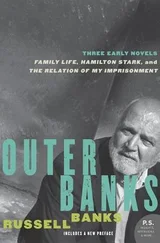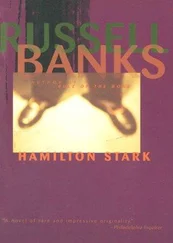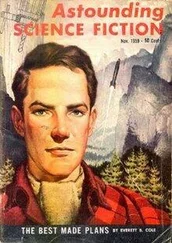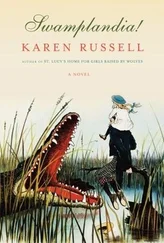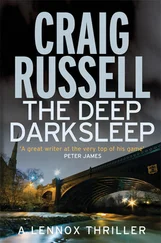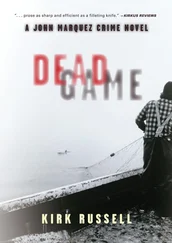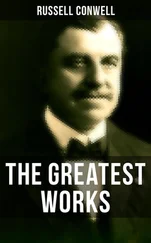“That’s how we got Baby A, you know,” Jim whispers to the intern, Sam Yoon, a college junior in a mint-green dress shirt who is earnestly frowning as I exit the trailer; it’s a whisper I know I’m meant to hear.
“Trish pitched Mrs. Harkonnen at a Sleep Drive in a parking lot. Nabbed her right outside the grocery store, schlepping Baby A. Watch her pitch sometime. Shadow her at a Drive. She’s just pure appeal, pure passion for the cause. Her sister was Dori Edgewater.”
“Oh, my,” says the intern, exactly matching Rudy’s tone.
What distinguishes me as a recruiter, I’m told by Rudy and Jim, is that my sister’s death is evergreen for me, a pure shock, the freshest outrage. I don’t have to dig around with the needle; that vein is open on the surface.
“And Trish can’t fake it.”
“Cries every time.”
“Quakes, like.”
“She gets emotional, and people really respond.”
“Describes the sister like she’s standing right in front of her.”
“Sobs like she’s still at the wake —”
Jim frowns, self-startled.
He’s a mid-sentence self-startler, Jim. “Hiccups of insight,” he calls these moments. Whenever my boss is struck dumb by his own epiphanic inner light, I picture a tiny deer jolted out of its grazing with grass in its mouth, paralyzed by the brilliant approach of a Mack truck.
“Wait a sec, Rudy, why the hell do we call it that? A ‘wake’? For a dead gal? That’s terrible. That’s goddamn macabre.”
“I’ve wondered that myself. Seems a pretty grim joke.”
“Oh, there’s definitely a reason,” says the brown-nosing intern. “Some Catholic logic. Or is it a Jews’ thing?”
“People respond!” bellows Rudy. “Edgewater, she’s a little engine. Even our most resistant demographics will give to her. Males, retirees! Greenwich bankers, West Texas construction workers. The Southeast Asian community, where, as you well know, there is a culturally rooted suspicion of Sleep Donation.”
“Of course.” The intern nods.
“But they have no immunity to Edgewater’s story.”
I am hovering near the trailer door, holding my breath. They keep talking, and I listen. I desperately need what they are offering. A faith-transfusion. The why and the how of the organization. Our work and its value.
In high school, the Red Cross blood truck would pull up behind the trailers to collect donations from young, hale students, who got to skip homeroom and eat a raisin cookie and relinquish pints of type O. Dori gave, but I never did —I convinced myself that I was scared of needles. If I’d known then that I’d wind up here, begging strangers for an hour of their sleep, I think I would have given blood at every opportunity.
As a Corps volunteer, my duties are numerous and varied. Weekends, I mobilize the Sleep Van —a moonlit enterprise that dispatches a volunteer team to the homes of good sleepers, who have signed up to donate their rest to insomniacs. A Sleep Van has a spartan interior. The beds we call “catch-cots.” If the Van is equipped for infants and children, it features catch-cribs and trundles. Nurses slip on the anesthetic mask, open the IV of special chemicals, relieving a donor of consciousness; next, they clamp on and adjust the silver helmet, which does chafe a bit; one to two minutes after the loss of consciousness, once the donor enters a state of artificially stimulated sleep, the draw commences. The air in the Sleep Van turns balmy as the tubing heats; a donor’s dream-moist breath gets siphoned into nozzles that connect to our tanks. Healthy sleep is pumped out of the body into long, clear tubes.
Weeknights, I recruit.
We set up for Sleep Drives in neighborhoods all across the county, right at sundown. Nurses swab out helmets in multiple Vans, preparing to take sleep donations for testing. Administrators sit inside lit tents on suburban lawns, holding clipboards, prescreening donors with an eligibility questionnaire to filter out those whose sleep is prone to nightmares, disturbance. We babble the questions to volunteers under the midnight pines.
“When was your last full night of deep, unbroken sleep, ma’am?”
“When did you last dream about barking dogs, outer space, red grass, an ex-wife? Now, please be honest, sir —if your sleep was disturbed by her face, check the box…”
For most of the twenty-first century, insomnia was treatable by prescription medicines; I can still remember going with my father to pick up my sister’s sleeping tablets from the owl-faced pharmacist. Capsules of Silenor —half white and half carnation pink. Dori’s sleep trouble began early, at age eleven. Back then, before the disease progressed, medications reliably put her under. I used to study my sister’s face on the pillow, trying to catch the moment when the Silenor took effect.
Once her adolescent insomnia ratcheted up, for unknown reasons, into the full-blown disorder, Dori slept about four hours a night. But for years, this was enough. The body can be a marvel of resiliency, a cactus when it comes to sleep —capable of surviving on mere drops.
By twenty, however, Dori had developed a resistance to all sleep aids. She also became, quite suddenly, impossible to anesthetize. We learned this when she broke her leg in college and surgeons were forced to operate on a fully conscious Dori.
The anesthesiologist is still writing papers about her.
Her leg healed, but soon Dori lost the ability to sleep even three hours a night. She could not stay down long enough to cycle into REM. She had to drop out of college and move into a white hospital room. What didn’t they try on her? Dexmedetomidine, propofol, sevoflurane, xenon. The tranq gun used to bring down zoo elephants would have stopped her heart, or I’m sure they would have given that a go. Nobody could shade or muzzle her mind.
For the next year and seven months, Dori barely slept. Then the loss became total. The final day of my sister’s life unwound with zero regard for the moon or the sun. She died awake, after twenty days, eleven hours, and fourteen minutes without sleep. Locked flightlessly inside her skull.
As an adolescent, I used to seethe with jealousy, because whereas I got auburn stubs, Dori had these fringed butterfly eyes, jet lashes that curled so outrageously around her Caribbean-green irises that strangers assumed were drugstore falsies. During her endless Last Day, I remember studying those eyelashes pasted to her skin, at an angle of unrelieved attention. She blinked at me, her thinking slow as syrup, and I wished that she would not smile again, not ever again, not like that, because by that point every smile was an accident, a twitch driven by nothing that I recognized as human. My mouthy, gorgeous, stupid-brave sister Dori, Miss “Drive It Like You Stole It” (even when the only “It” available to us was our great-aunt’s haunted house of a wood-panelled Chrysler —who ever heard of a car with termites?), Miss “Three Jobs, Two College Majors, and There’s a Flask in my Purse,” was at this point a nobody. A “vegetable,” as they say —the doctors’ potted plant. And I hated the sight of her facial muscles pumpkin-grinning on the pillow, her pale eyes twitching, and I hated watching her go speechless under the conglomerate weight of so much unrelenting looking and thinking and listening and feeling, her mind worn thin by the sound of every cough and the plinking moisture of every raindrop, these noises exploding like grenades through her naked awareness —her mind crushed, in the end, by an avalanche of waking moments. Once sleep stopped melting time for Dori, she could not dig herself out. She was buried under snowflakes, minutes to hours to months.
Читать дальше

